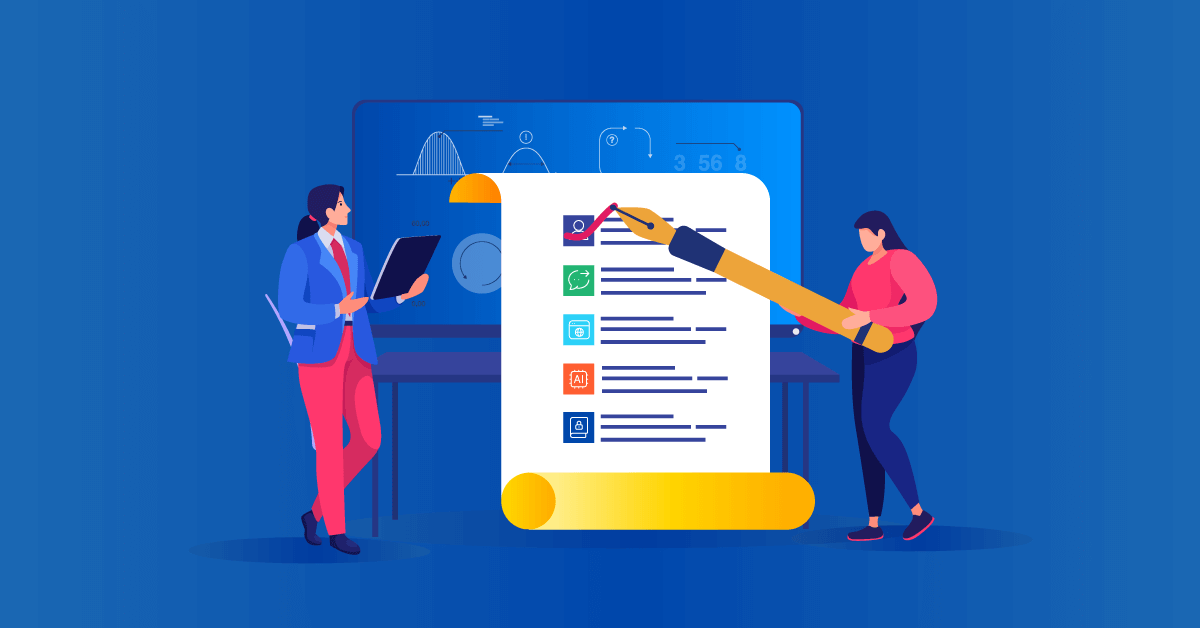- The Journey of Learning: From Child to Adult Learning in Two Clicks
- Enter Internet Learning
- Changing Learning: The Use Of Internet In Learning
- The Use Of Internet In Teaching And Learning
- How have Businesses Taken Advantage of the Internet?
- The Luxury of Choice, Training Anywhere
- In Short Points
- To Conclude…
If we are to talk about the changes the Internet has brought on the learning process, we first have to think of how we got here: you either Googled a relevant keyword, or you were given a link to this article; either way, we’re talking about a completely unheard-of way of doing research and learning about new things that would send shivers down the spine of any academic or researcher thirty years ago.
One thing is clear: The use of internet in teaching the learning process will influence it.
Welcome to the age of oversimplification, where new experiences are but a few clicks away, and learning is a solo act.
The Journey of Learning: From Child to Adult Learning in Two Clicks
Let me take you back to your first day of school; most will remember this as a dramatic day of separation between parent and child and others will have embraced the opportunity to meet new kids and be part of a new world where the teacher is the leader and the student is successful when faithfully following instructions.
What has been noticed is that not every child will respond the same way to the traditional way of teaching; it takes a combination of luck and fortune to have a teacher that takes the time to realize the needs of each student and act upon that with a customized teaching style.
If I am to compare the way I was taught in elementary school, with the way my little brother does now, I would say that his experience seems light years away from mine. I wouldn’t necessarily go as far as classifying his as a better one, but I would say it’s different.
He owns a Playstation, a computer and all sorts of electronic mediums that promote interactive learning through entertainment. Studies have showed that through play, children are more susceptible to developing physical, social, cognitive and language skills.
There were two groups of students when I graduated from school: the “good students” and the “hyperactive” “hard-to-teach” “menaces” of students. If you were lucky, you could go with the flow of the educator and be in the first group, if not, you were given a title that – in hindsight – describes a person that was more unlucky than unwilling in his journey to education.
Enter Internet Learning
When discussing education, someone usually mentions how technology changed the way we do it now in comparison to the old days. The classic joke of “Thanking Wikipedia and Google for our degrees” is more reality than humour. One cannot deny that our tolerance levels for lack of knowledge have dropped, and “Google it” has become one of the go-to responses to someone’s query. This is the byproduct of having easy access to an immeasurable wealth of information.
I’m sure you can remember writing a paper at some point in your life; whether that was for high school, or University, chances are that if you graduated any time before we hit the millennium, you did a lot of page-turning in your search for excerpts, sources and information relevant to the topic.
This is hardly the case anymore… you flip open that laptop, it automatically connects onto the nearest Wi-Fi Hotspot, and you’re ready to go. Google will welcome you with a plethora of options to search through, may that be a medical journal or simply a book review, the results take less than a fraction of a second to be listed and ready to be read.
Changing Learning: The Use Of Internet In Learning
When Salman Khan took to the task of teaching his cousins Mathematics through Yahoo’s Doodle Notepad, he wasn’t prepared for what would come next. Apparently, his method of teaching became so popular within the family, because his students could now replay the material and make the best of it, that he thought he would distribute his tutorials over YouTube.
When you hear YouTube, you think of “Music, Videos, Entertainment”; for a visionary this was a gateway to create something powerful, to assist seemingly anyone with a cheap computer who wishes to learn. This foresight was what lead to Khan Academy being created, a platform housing thousands of videos of tutorials on topics ranging from Mathematics, to History and Astrophysics, with tests and ways to practice, as well as monitoring of your performance.
Embracing the power of the Internet, and sharing of knowledge, many Universities have jumped the wagon and offered full-fledged University-level courses online. You can subscribe to websites like www.Coursera.org and sign up for a 10 week course on “Volcanic Eruptions” or “Exercise Physiology” and other topics you probably would have never heard of if it hadn’t become so effortless to have so much knowledge at your disposal. At the end of that period, if you turn in all the requested homework, and take the tests as required, you are even given a certificate of participation along with your grade, which is just as good as any other course certification you have taken in University.
So, we know it’s easy, we know it can be free, the only thing left is for you to have about 5-10 hours per week to study and develop your new skill of choice, and the drive to see yourself through the task of learning more things.
The Use Of Internet In Teaching And Learning
Does learning ever stop?
Well, no, and it shouldn’t. Ask a doctor, a financier, or a marketeer, if using just the information you learnt in University will ever get you anywhere. In business, it’s a rule that you must keep yourselfup-to-date with your sector if you want to keep up with the competition. It’s partly the reason why new books are introduced every 1-2 years for University students… new methods to teach, new techniques to be accustomed to.
And as for the workplace, it’s the reason why training is not just something you do for the first month when you join a company. It’s a process that takes place again and again whenever new developments come out in your respective field.
How have Businesses Taken Advantage of the Internet?
Do you know Second Life? It’s a Massively Multiplayer Online Role Playing Game (MMORPG) in which every
player creates an avatar (a character) and can take up different “virtual” activities, such as building a home, taking up a profession, and contributing to the online society in various ways.
There are companies like IBM, and Intel amongst others, who have made it part of their daily interaction with employees; more specifically, IBM has over 400,000 employees, and most of them are outside the Americas. IBM hosts virtual meetings, guest-speaker events and even trainings online, making it easier for people from different locations to meet, and share ideas in a creative 3D environment.
In IBM’s first virtual international conference, savings in excess of $300,000 were reported, due to the use of online instead of physical space. Needless to say, it has become a norm for IBM. Most companies use a combination of personal, group and online (self-paced) learning, with online training taking the lead lately, due to the savings it allows the company, as well as the ability of the trainee to take his time and customize both learning and practice on his own.
The Luxury of Choice, Training Anywhere
When looking for a job, one of the most sought-after characteristics of a company, next to the attractive rewards package, is the offer of continuous training. That is not because people like to have the feeling of being “in class” all the time, rather than the feeling of empowerment and progress within the company. Being trained means being valuable, and one’s value is further increased by the quality of training he/she receives.
The reason Apple, Dell, and other technological giants offer trainings all-year-round is because they believe their staff deserves to have their resources anytime, with the ability to review and even go back to refresh their memory on things they have already received qualifications on.
It’s about a company valuing its employees as much as it is embracing the different nature of people, some of which learn better by reading, hearing, or writing, meaning they need extra time to pause, rewind, and develop their pace as they go. What used to be a user’s manual you could take at home, now fits in your pocket and lives on the cloud, and you can use it from anywhere and however you see fit.
In Short Points
- E-Learning offers a customizable learning experience; Teaching adults is more complex.
- Teaching aids such as videos and other supporting material can all be bundled together online.
- Interactive learning inspires youth to partake.
- Needs of different kind of learners are more easily accommodated.
- New information is directly funnelled to us, instead of having to issue new versions of the same material.
- What used to be costly is now inexpensive; money saved can fuel the creative part of teaching.
- More time spent on the computer; should be monitored to avoid abuse.
- Kids that were once thought to be “unsuitable” for school now have way to find interest in learning.
- Adults have alternatives to being taught in a class, can now learn anywhere, anytime.
- Online material allows people to re-evaluate their knowledge, even if they have already acquired a qualification.
To Conclude…
The reality of learning is an ever-changing one… what we used to have to ask our mother for is now replaced by “Google” and the encyclopaedia our parents bought tome-after-tome now resides on the Internet and is written and updated by everyday Joes like you and me.
Learning has changed for everyone, as iPads join the classroom to help kids with learning difficulties, computers are standard equipment in class, and University classrooms are called “Smart-Classes” for having computer equipment directly connected to the board. While technological advancements have been happening for the last 30 years, the Internet has singlehandedly revolutionised how learning is facilitated, more than the Radio or TV ever could.


